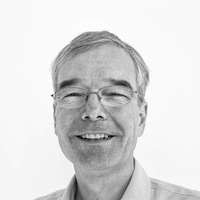Read about one of the most powerful radiation sources in the world and how it is enabling new insights through international cooperative research.
The European Union is arguably one of the greatest experiments in international cooperation to date. The aim of securing lasting peace through political and economic cooperation has had success, yet threats still loom on the horizon. International cooperation in Europe has brought tangible benefits in the field of science for centuries. One only has to think of Galileo and his modification of Hans Lippershay’s telescope to understand the breadth of knowledge made available by the sharing of information and research.
The European Synchrotron Radiation Facility, in Grenoble, France, has been facilitating cooperative ventures between European academic institutions for twenty years. One of the 4 most powerful radiation sources in the world, it produces X-rays 10,000 times stronger than your average hospital machine. Its unique position and international access to universities has facilitated advances across many areas. Unlike CERN, the ESRF is not primarily about discovering the deepest fabric of the universe. Instead the fine tools of subatomic physics are brought to bear on subjects as diverse as chemistry, environmental science, engineering and even palaeontology. Ernest Rutherford, sometimes called the father of nuclear physics due to his discovery of the atom’s structure, was wrong when he said ‘all science is physics or stamp collecting.’ However, it is the key to unravelling the structure and function of life itself, and the ESRF has been doing just this since its first beam was fired in 1992.
The Sychrotron is a large ring 844 meters around the circumference. Electrons are produced from an electron gun, similar to what you would find in old television screens, and bunched together before being shot into the the ring at close to the speed of light. The electrons travel round and round the ring in a vacuum, their direction and orientation being controlled by strong magnetic fields. As they go around they pass through devices called undulators which force them to change direction many times and emit radiation as a result. The radiation at each undulator adds together to create an incredibly fine beam of X-rays which passes into one of 42 beamlines. These are specialised labs where the X-rays are used for their various purposes. At a length of between 0.1 and 0.01 nm, the X-rays are roughly the size of the bonds between atoms and can be used to ‘see’ the inner workings of the molecules of life.

In 2009 Professor Ada Yonath and colleagues received the Nobel Prize for chemistry after making discoveries about the structure and function of ribosomes. Ribosomes are the ‘engineers’ of life, looking at the information contained in our DNA and using it to build long chains of amino acids. These amino acids then fold up to form proteins which carry out all kinds of different functions. The slight differences in how animal and bacterial ribosomes work make them ideal targets for antibiotics. Professor Yonath has elucidated the precise ways in which 20 different antibiotics attack the bacterial ribosomes paving the way for production of more effective drugs with a lower chance of bacterial resistance developing. She was also the first Israeli to receive a Nobel Prize.
Then in 2012 the Prize was bagged again when Professors Robert Lefkowitz and Brian Kobilka used the ESRF to further the understanding of G-protein coupled receptors. These sit inside the cell membranes of non-bacterial living organisms. They sense molecules outside the cell, like hormones, neurotransmitters or even odours and facilitate the appropriate cellular response. They are the mechanism by which we sense light and smells and are the target of around 40% of modern medicines. Professor Kobilka used the ESRf to capture an image of a receptor just as it was activated by a hormone sending a signal into the cell.
These are just two of breakthroughs made possible by the ESRF which receives over 2,000 research proposals every year. With funding from 18 European Countries and now Israel and South Africa as well the ESRF represents a benchmark in cooperative international endeavour. Dr Claus Habfast is the head of the communication group at the ESRF and has worked at the European Space Agency and CERN over his career. ‘Science has always been characterised by international cooperation, and where this was restricted, scientific progress slowed down.’
‘Scientists enjoy the enormous privilege that the taxpayer funds an activity that to a large extent is not producing any tangible benefit other than academic knowledge.’
E&M: I see that some of your funding countries, Israel and SA, are outside of the EU. Do you see this continuing and what benefits might this bring?
CH: The member states of the ESRF have asked its management to attract new partners, including from outside Europe. The realm of the European Research Organisation, for example ESA, CERN and also the ESRF, is now clearly more global than strictly European.
E&M: What problems, if any, does working in such a ethnically and nationally diverse environment bring?
CH: I would have problems if I could not work in such a diverse international environment. At the ESRF, it is important to maintain English as the working language despite some 60% of the permanent staff being French. Everybody has a good mastery of French, or will learn it quickly, but English as the working language is a prime prerequisite to remain attractive internationally.

Dr Habfast’s celebration of the global nature of scientific research is tempered by a concern over what he sees as the ‘ivory tower’ of academics keeping their world separate from the prying eyes of the wider public. He sees a participative democracy in which the public has more influence over the direction of scientific research as the only way forward.
CH: Scientists enjoy the enormous privilege that the taxpayer funds an activity that to a large extent is not producing any tangible benefit other than academic knowledge. It is obvious that scientists have to share this knowledge, and what they do, beyond the circles of their peers. In addition, I believe that they must even listen to what the layman says about their research. How far this participation of non-scientists should go, will depend on the circumstances. Just as politicians now have to accept the empowerment of citizens, scientists cannot work forever in an ivory tower.
However, numerous examples of media hype and misplaced public perceptions have had disastrous consequences at times. Andrew Wakefield’s fraudulent 1998 paper on a link between Autism and the MMR vaccination meant that thousands of children, including yours truly, were not vaccinated and this has been the cause of preventable deaths the world over.
E&M: Do you foresee issues with this concerning a perceived lack of scientific knowledge, or perhaps interest, among the wider public?
CH: The wider public will never be involved in an expert scientific debate. But the perception of science by the public is very distorted today by the way in which leading academic journals, and in their wake the media, select which scientific topics should be covered. A lot of good science is now completely unknown to the public whilst some areas get all the attention. This was not always the case.
E&M: Do you think scientific views, facts and evidence should have a greater, lower or equal weight in deciding policy than pure, uninformed opinion?
CH: Where science is accepted as something never static but a field that constantly produces new knowledge, it can make good contributions to formulating policies. However, it will mean that policies will have to be revised when science produces new knowledge, a process politicians do not always like. I am thinking of public health, pollution, climate change and may other fields where scientific knowledge can evolve very rapidly, sometimes faster than policy-making.
Whether Dr Habfast’s utopian view of public participation in science will come to fruition remains to be seen. However, it is certain that major advances across all scientific fields owe a debt to transnational research and information sharing. Through a variety of schemes, including the International Student Summer Programme, the ESRF is attracting bright minds from all over the world to continue to build on this culture of cooperative innovation. In whatever way future events unfold in Europe we can take pride in supporting the ESRF and those men and women who strive to look ahead to where our greatest achievements still lie.
Cover photo: Denis Morel; courtesy of Claus Habfast










